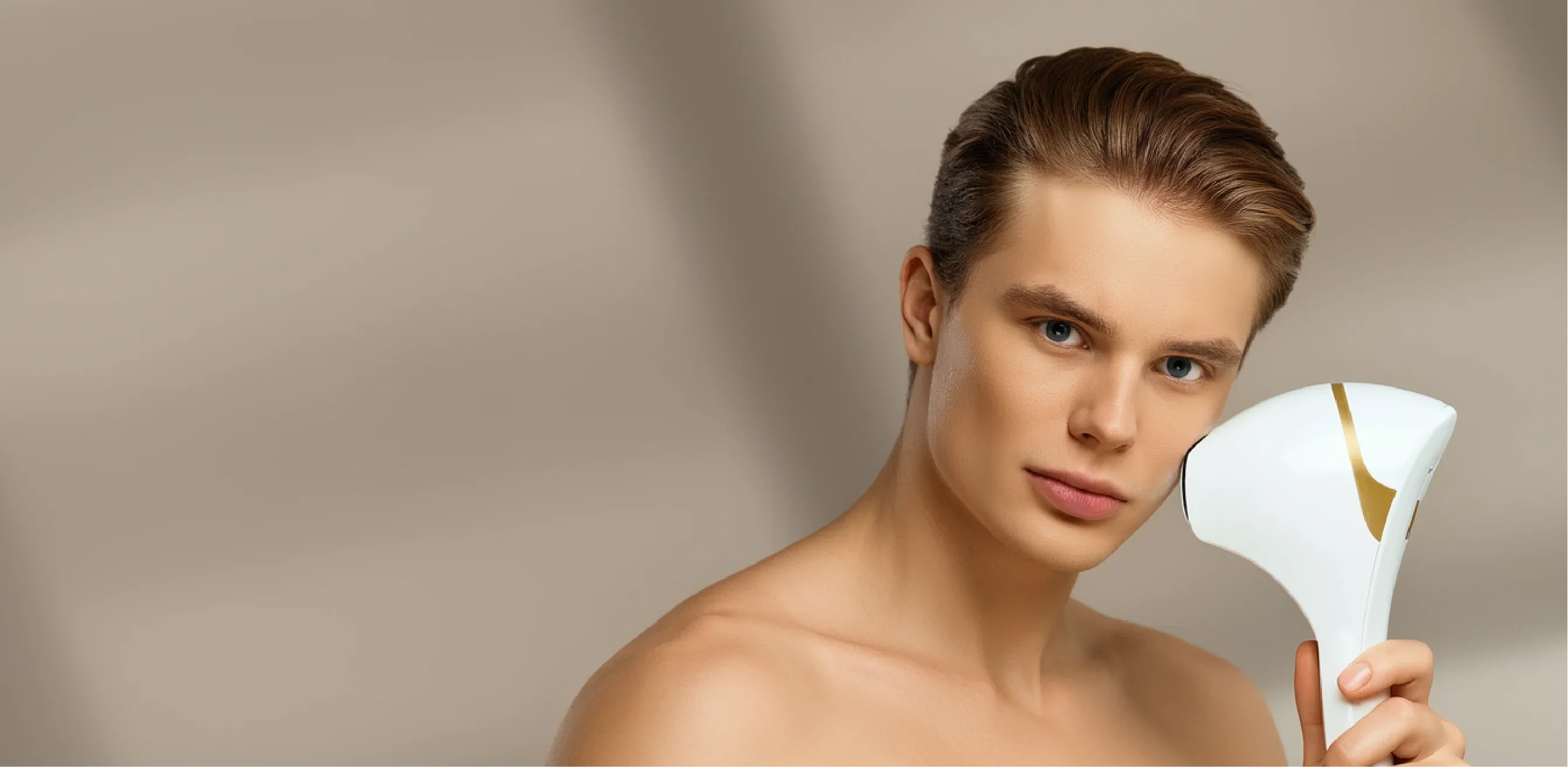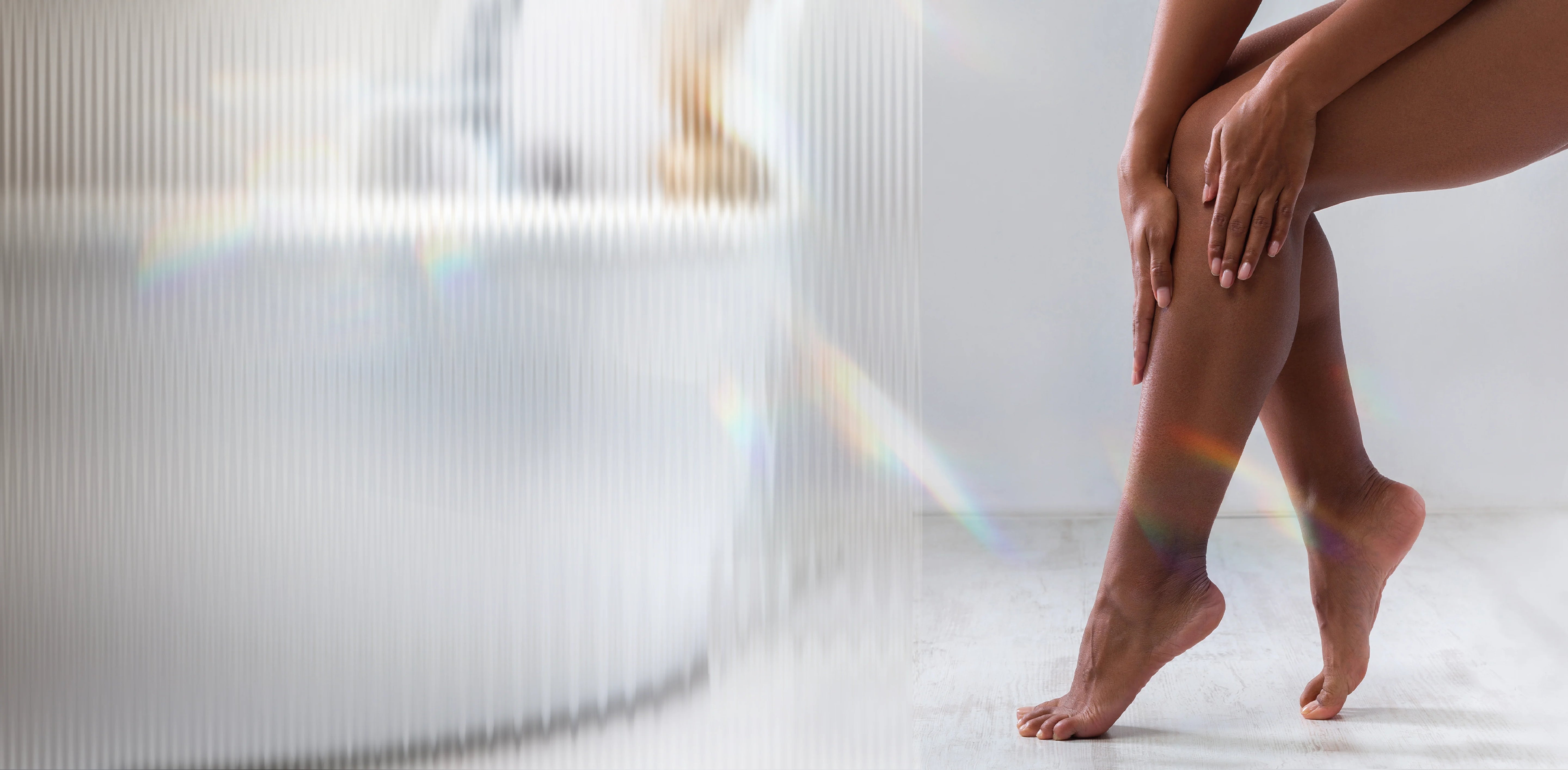How to Prepare for Laser Treatments and Achieve Optional Results
by Noah Cooter
Laser hair removal has become one of the most popular ways to achieve smooth, hair free skin without the constant upkeep of shaving, waxing, or plucking. The potential is exciting for anyone who’s dreamt of silky smooth skin and being permanently free of unwanted hair. But there is a learning curve. As with any sophisticated beauty device, you’re sure to have questions going into your first laser session. Chief among them: Do I need to shave beforehand?
The short answer is yes. Shaving is a critical step in preparing for laser hair removal. The length of the hair at the time of treatment plays a big role in how well the procedure works, how comfortable it feels, and the quality of results you’ll see over time.
This article will explore why shaving matters, how to prepare correctly, common myths about shaving and hair growth, and what to expect before and after your sessions so you can embrace your initial treatment with confidence.
Why Shaving Matters Before Laser Hair Removal
Shaving before a laser session isn’t just a routine step—it directly affects the efficacy of the treatment. To understand why the length of your hair matters so much, it helps to first look at how laser hair removal actually targets and disables hair growth at its source.
How Laser Hair Removal Works
Laser hair removal works by directing concentrated light energy into the pigment (melanin) in your hair follicles. The light is absorbed and converted to heat, which damages the follicle and prevents future growth. For this process to be efficient, the laser needs a clear pathway to the follicle. A couple millimeters of hair can go a long way to guiding the laser energy to the root of growth.
IPL vs Laser Hair Removal
What about hair removal with an IPL device? Though common, IPL hair removal does not use true laser technology. Instead, these devices bombard the skin surface with intense pulsed light, which can damage the epidermis. If you have a high pain tolerance, you can use IPL for a quick fix by burning off sections of hair, but the broadband light damages the hair and skin alike. Whereas a laser device works by targeting follicles, IPL devices do not explicitly target hair follicles with laser energy. When used repeatedly, they can irritate the treatment area and cause skin damage.
Why Long Hair Can Interfere With Treatment
If hair is too long at the surface of the skin, it can absorb laser energy before it reaches the follicle. This can cause several issues:
-
Discomfort from surface burning or singeing
-
Wasted energy, since the laser isn’t reaching the follicle effectively
-
Uneven results, because longer hairs scatter energy rather than focusing it deep where it’s needed
That’s why it’s always recommended to shave—not wax or pluck—before treatment. Shaving keeps the follicle intact while ensuring the hair length is short enough for effective targeting. This is the case for body hair, such as the bikini area, as well as facial hair, such as the upper lip.
The Benefits of Shaving Before Your Session
Shaving before laser hair removal ensures:
-
The hair is short enough for optimal targeting.
-
Less discomfort during the session.
-
You’ll see results sooner and more consistently.
-
A smoother surface for the laser device to rest flush against during treatment.
Preparing for Laser Hair Removal - The Correct Steps
Shave
The ideal hair length for most laser hair removal treatments is around 1–2 millimeters, which usually means shaving about 24 hours before the treatment. This allows a tiny bit of regrowth for the laser to detect, while keeping the surface smooth and irritation-free.
Moisturize
You’ll want healthy, moisturized skin for effective laser treatments. However, you won’t want a fresh layer of lotion or moisturizer on the skin during treatment. That’s why it’s important to establish a healthy moisturizing routine early on. Depending on how fast your hair grows, you’ll want to shave and moisturize a day or two before your laser session.
Should You Exfoliate Before or After Shaving?
Very light exfoliation before shaving can help remove hair and dead skin cells, reduce the chance of ingrown hairs, and make shaving easier. However, exfoliating after shaving can irritate freshly exposed skin. The safest approach is to exfoliate the day before you plan to shave for treatment prep. Avoid heavy exfoliation and skin resurfacing procedures before and after laser treatments.
Sun Exposure and Tanning
Avoid tanning beds, self-tanner, and excessive sun exposure in the weeks leading up to your session. Darkened skin can interfere with laser targeting, reduce effectiveness, and increase the risk of side effects like hyperpigmentation. If you’re using a hair removal device that scans and identifies your skin tone, you may get inaccurate readings if your skin is darker than your base tone.
Pretreatment Checklist
-
Shave and moisturize the treatment area approximately one day prior to treatment.
-
Do not get a skin peel, or any other skin resurfacing procedure for 8 weeks prior (and after) laser treatment.
-
Do not tan in sunlight or a tanning bed before treatment.
-
Avoid self-tanning creams, or any other product that darkens your skin.
-
Avoid waxing, plucking, and electrolysis prior to treatment.
-
Ensure you are using the correct laser hair removal device for your skin type and hair color..
Common Myths About Shaving and Hair Growth
Does Shaving Make Hair Grow Faster?
No. Shaving does not affect the follicle—it only cuts hair at the skin’s surface. Hair may feel thicker because of its blunt edge after shaving, but growth rate and density remain unchanged.
Does Shaving After Laser Increase Hair Growth?
Shaving after laser treatment does not make hair grow back faster or thicker. In fact, if you’re using a device that recommends treatment every two weeks, it’s the preferred method for managing regrowth between sessions, since waxing or tweezing can remove the follicle that future laser treatments need to target. If you stick to your device’s suggested treatment schedule, you’ll soon put shaving behind you forever.
Aftercare for Best Results
What to Expect in the Days After Treatment
Mild redness or sensitivity is normal immediately after laser hair removal, especially if you have sensitive skin. An ice pack can be applied to the treatment area to reduce any discomfort. With advanced devices, these effects usually fade within hours. Some hairs may appear to regrow, but this is often the body shedding treated hairs from the follicle.
Skincare Products to Use and Avoid
-
Use: Gentle, fragrance-free moisturizers, aloe vera, or thermal spring water sprays.
-
Avoid: Retinoids, exfoliating acids, and strong scrubs for at least a week after treatment.
-
Avoid hot showers, saunas, and tight-fitting clothing, as these may cause irritation.
-
Avoid artificial light sources, such as tanning beds, immediately after treatment.
How to Support Long-Term Results
-
Stick to your scheduled hair removal sessions to achieve permanent hair reduction.
-
Shave only (no waxing or tweezing) between treatments.
-
Apply daily sunscreen to protect your skin from UV damage and pigmentation issues.
-
Invest in an advanced device that’s tough on hair but gentle on skin.
The Epilaser Difference
If you’re seeking gentle laser treatments with the power and efficacy of professional laser hair removal devices and the at-home convenience of retail devices, consider investing in an Epilaser at home laser hair removal device. Powered by worldwide patented SPOT™ technology (Smart Precise Optical Targeting), Epilaser delivers laser energy directly into the follicle with unmatched accuracy, leaving your skin healthy and radiant, regardless of your skin tone and hair color. How is this possible? SPOT™ hair removal technology uses an advanced camera system to identify hair follicles for ultra-targeted removal without affecting skin. That’s why there are no sun restrictions, and that’s how it’s safe for all skin tones, including dark skin.
The ideal hair length for Epilaser treatments is about 2mm. For most, this is one day after shaving. This may vary if your hair grows faster or more slowly. The 2mm sweet spot ensures maximum energy reaches the follicle without surface interference. By combining proper preparation with Epilaser’s breakthrough technology, users with both lighter and darker skin tones can enjoy smoother skin, faster results, and long-term hair reduction that’s safer and more effective than ever before.
Key Takeaways
Shaving before laser hair removal is an important step in ensuring the treatment is both safe and effective. By keeping the hair short—ideally around 2mm—the laser can better locate and disable the follicle without surface hair interfering or causing discomfort. Proper preparation also includes mindful practices like exfoliating at the right time, avoiding tanning, and maintaining healthy skin leading up to each session. It’s equally important to remember that common myths, such as shaving making hair grow back faster or thicker, are not true. After your treatment, gentle skincare and sun protection will help minimize irritation and support long-term results. With consistency and proper aftercare, laser hair removal can deliver smoother skin and lasting reduction in hair growth.
Key points:
-
Shaving before laser hair removal is essential
-
The ideal hair length is about 2mm.
-
Exfoliate before shaving, not after, to prevent irritation.
-
Sun protection matters.
-
Shaving does not increase hair growth or thickness.
-
Stick to gentle skincare and avoid harsh products or sun exposure.
-
With Epilaser’s SPOT™ technology, achieving lasting hair removal is easier than ever.






Share:
Laser Hair Removal vs Waxing
How Much Does Laser Hair Removal Cost?